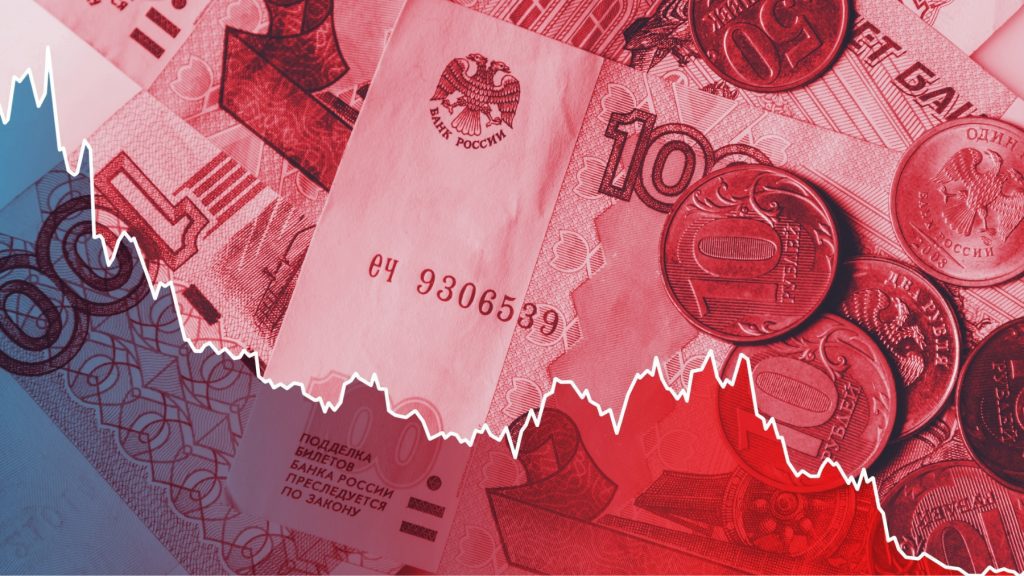
Russia’s Central Bank announced its decision to significantly raise interest rates by 3.5 percentage points, reaching 12%, as part of a bid to stabilize the ruble.
- Nearly a quarter of the ruble value was lost against the U.S. dollar since the conflict with Ukraine began in February 2022.
- With annualized inflation at 4.4% for the first seven days of August, the Central Bank aims to bring inflation back to a targeted 4% by 2024.
Following an emergency meeting on August 15th, Russia’s Central Bank announced its decision to raise the interest rates by 3.5 percentage points to 12% in an effort to prop up the rubble after it hit a 17-month low against the U.S. dollar just a day prior at 102 to the dollar.
The ruble’s decline has been stark, losing nearly a quarter of its value against the U.S. dollar since the beginning of the military conflict between Russia and Ukraine in February 2022. The Russian economy has been grappling with a series of setbacks, including Western sanctions, high inflation, continuous military spending, and a labor shortage exacerbated by conscription avoidance.
The Central Bank attributed its decision to raise the interest rates to “inflationary pressure” arising from “steady growth in domestic demand surpassing the capacity to expand output.” This adjustment is intended to curb the risk of destabilizing price fluctuations and to control inflation, which stood at an annualized 4.4% for the first seven days of August. The bank’s goal is to bring inflation back to a targeted 4% by 2024.
Maxim Oreshkin, President Vladimir Putin’s economic adviser, criticized the bank’s decision to raise interest rates in an op-ed for the state news agency Tass, attributing the ruble’s weakened state to “soft monetary policy”. He wrote, “The Central Bank has all the tools to normalize the situation in the near future and lowering lending rates to sustainable levels.”
Some economists argue that while the interest rate hike might slow down the economy, it remains necessary to control inflation. However, others emphasize the significance of the ruble’s decline, as it directly affects Russian citizens’ daily lives and perceptions of the nation’s economic stability.
In an interview with The Washington Post, Sergei Guriev, a Russian economist, expressed how politically important the fall of the ruble is considering its impact on the Russian public. “The difference between 50 rubles to the dollar in 2020, and 100 today is something every citizen can observe … even those who are convinced and brainwashed by TV propaganda,” Guriev said.
This isn’t the first time Russia’s Central Bank has taken drastic measures in response to economic crises. Similar emergency rate hikes were implemented in 2014 following the annexation of Crimea and in 2022 after the invasion of Ukraine. These moves reflect the seriousness of the current situation, as such increases are among the largest announced by the bank.
Inside Telecom provides you with an extensive list of content covering all aspects of the tech industry. Keep an eye on our Impact section to stay informed and up-to-date with our daily articles.